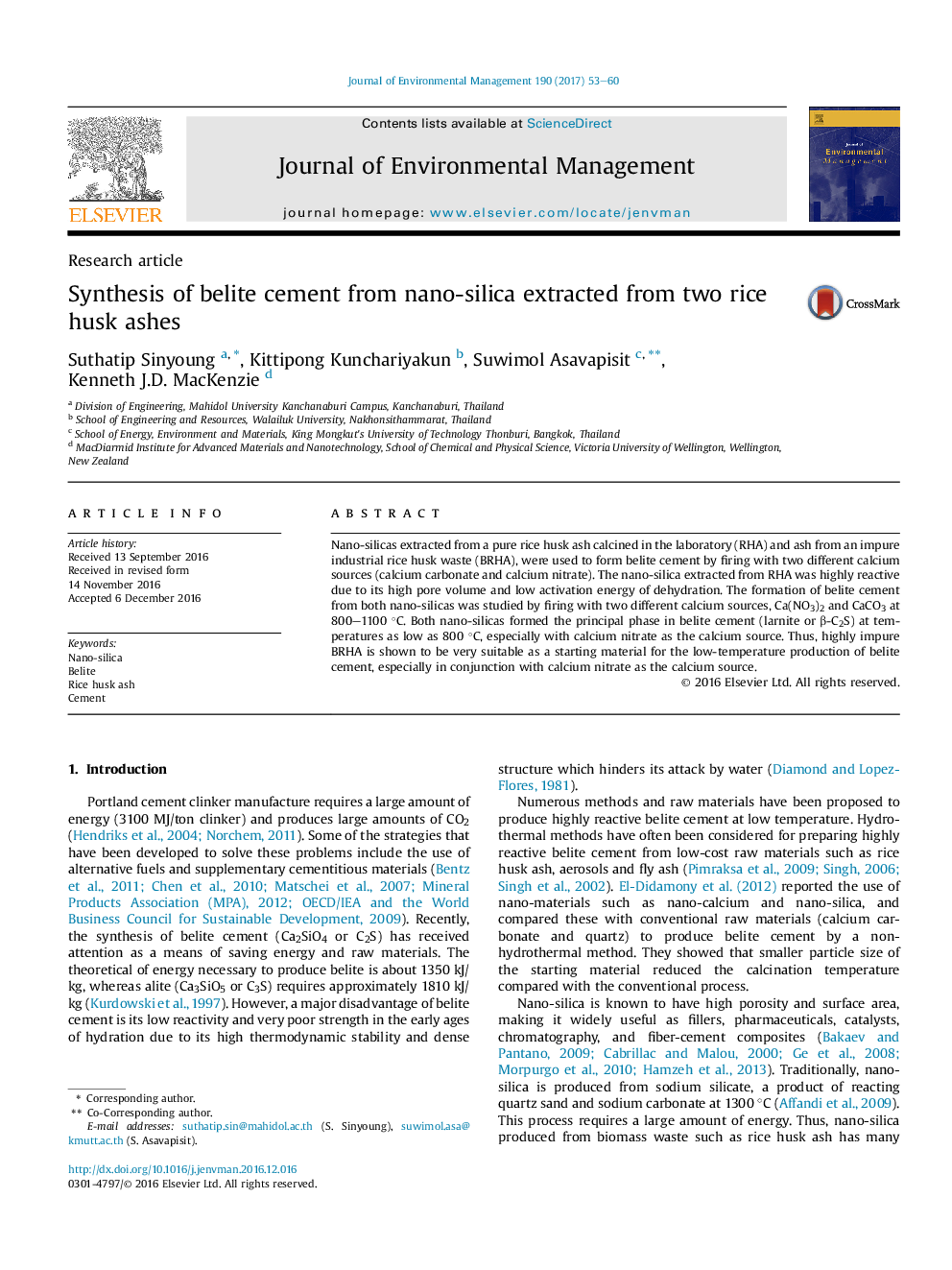| Article ID | Journal | Published Year | Pages | File Type |
|---|---|---|---|---|
| 5116884 | Journal of Environmental Management | 2017 | 8 Pages |
Abstract
Nano-silicas extracted from a pure rice husk ash calcined in the laboratory (RHA) and ash from an impure industrial rice husk waste (BRHA), were used to form belite cement by firing with two different calcium sources (calcium carbonate and calcium nitrate). The nano-silica extracted from RHA was highly reactive due to its high pore volume and low activation energy of dehydration. The formation of belite cement from both nano-silicas was studied by firing with two different calcium sources, Ca(NO3)2 and CaCO3 at 800-1100 °C. Both nano-silicas formed the principal phase in belite cement (larnite or β-C2S) at temperatures as low as 800 °C, especially with calcium nitrate as the calcium source. Thus, highly impure BRHA is shown to be very suitable as a starting material for the low-temperature production of belite cement, especially in conjunction with calcium nitrate as the calcium source.
Keywords
Related Topics
Physical Sciences and Engineering
Energy
Renewable Energy, Sustainability and the Environment
Authors
Suthatip Sinyoung, Kittipong Kunchariyakun, Suwimol Asavapisit, Kenneth J.D. MacKenzie,
